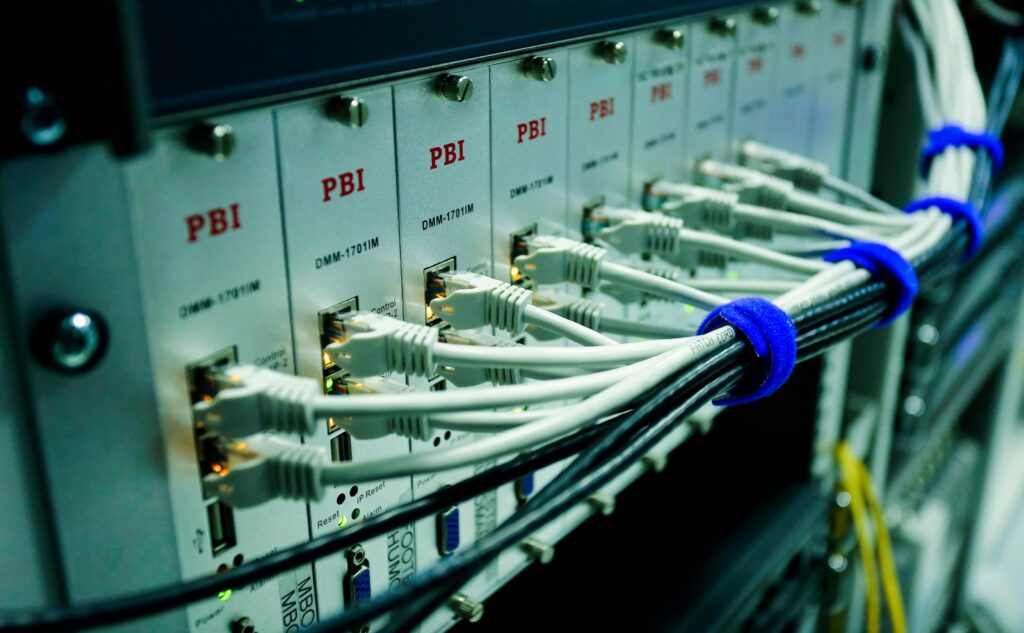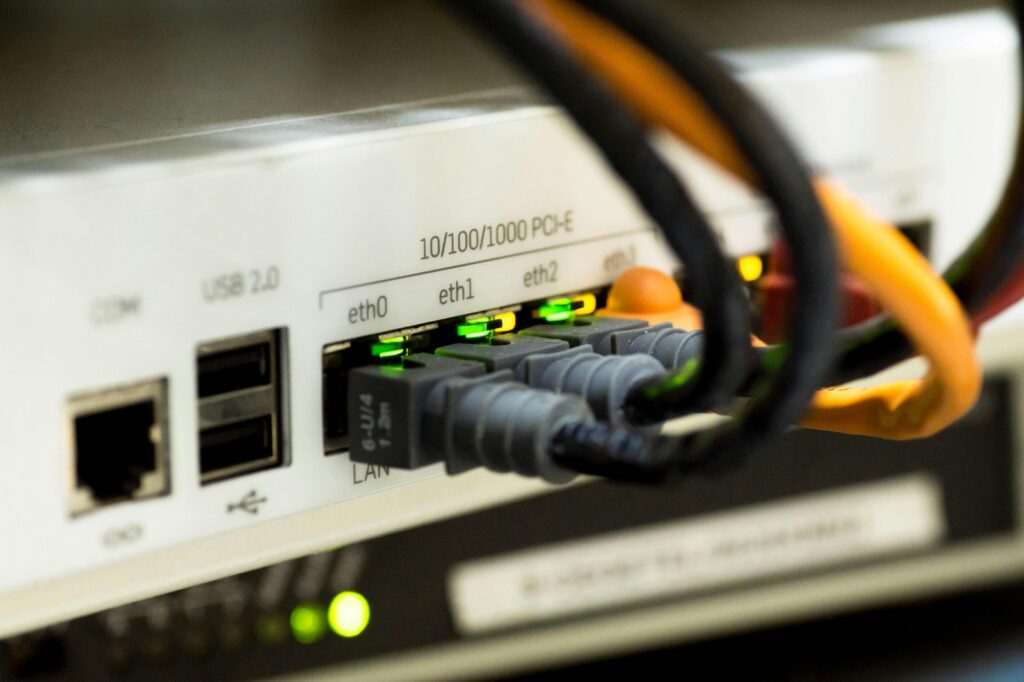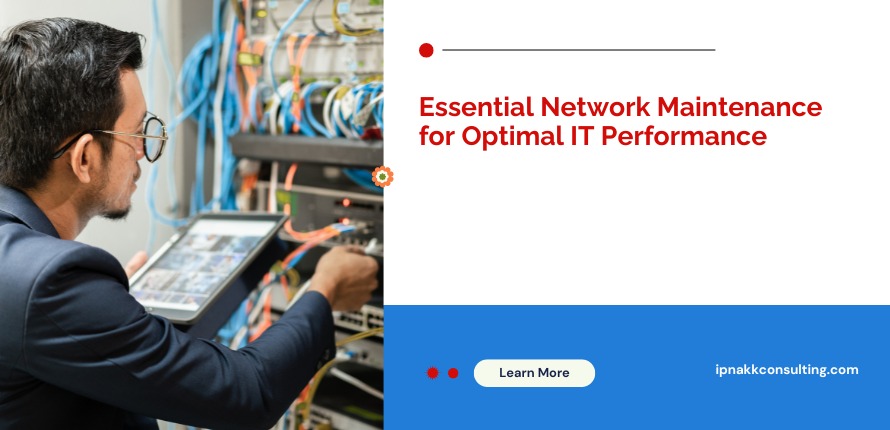Introduction
In today’s digital age, a robust and efficient network is the backbone of any successful organization. Network maintenance plays a crucial role in ensuring that your IT infrastructure runs smoothly and efficiently. This article delves into the essential aspects of network maintenance, offering comprehensive insights into how you can optimize your network performance through regular upkeep and strategic planning.
Understanding Network Maintenance
Network maintenance encompasses a range of activities designed to keep a network running efficiently. This includes monitoring network performance, updating software and hardware, managing security protocols, and troubleshooting any issues that arise. Effective network maintenance not only enhances performance but also prevents potential problems that could disrupt business operations.
The Importance of Regular Network Maintenance
Regular network maintenance is critical for several reasons. It helps in identifying and resolving issues before they escalate into major problems. Consistent maintenance ensures that the network operates at optimal performance levels, reduces downtime, and extends the lifespan of hardware and software components. Moreover, it safeguards the network against security threats, ensuring data integrity and confidentiality.

Key Components of Network Maintenance
Network Monitoring
Network monitoring involves continuously observing network activity to detect any anomalies or performance issues. This can be achieved through various tools that provide real-time insights into network traffic, bandwidth usage, and device status.
Software Updates
Regular software updates are essential for maintaining the security and functionality of network systems. Updates often include patches for security vulnerabilities, performance improvements, and new features that enhance overall efficiency.
Hardware Maintenance
Maintaining network hardware involves inspecting physical components, such as routers, switches, and servers, to ensure they are functioning correctly. This also includes cleaning and upgrading hardware to prevent failures and improve performance.
Security Management
Network security management is crucial to protect sensitive data and prevent unauthorized access. This involves implementing firewalls, intrusion detection systems, and conducting regular security audits to identify and mitigate potential threats.
Developing a Network Maintenance Plan
Assessing Network Needs
The first step in developing a network maintenance plan is to assess the current state of the network. This involves evaluating hardware and software, identifying performance issues, and understanding the specific needs of the organization.
Setting Maintenance Goals
Establishing clear maintenance goals helps in creating a focused and effective maintenance strategy. Goals may include reducing downtime, improving performance, enhancing security, and extending the lifespan of network components.
Scheduling Maintenance Activities
Scheduling regular maintenance activities ensures that tasks are performed consistently and systematically. This includes routine checks, updates, and security assessments scheduled during off-peak hours to minimize disruption.
Documenting Procedures
Documenting maintenance procedures provides a reference for IT staff, ensuring that tasks are performed correctly and consistently. This also aids in training new personnel and maintaining continuity in maintenance practices.

Network Monitoring and Diagnostics
Real-Time Monitoring Tools
Utilizing real-time monitoring tools allows IT administrators to track network performance continuously. These tools provide alerts for any unusual activity, enabling prompt responses to potential issues.
Performance Metrics
Monitoring performance metrics such as latency, bandwidth usage, and packet loss helps in identifying bottlenecks and optimizing network performance. Regular analysis of these metrics ensures that the network operates efficiently.
Troubleshooting Common Issues
Effective troubleshooting involves diagnosing and resolving common network issues such as connectivity problems, slow performance, and hardware failures. Having a systematic approach to troubleshooting minimizes downtime and maintains network reliability.
Updating and Patching Software
Operating System Updates
Keeping the operating system up to date is vital for network security and performance. Regular updates address security vulnerabilities, enhance functionality, and ensure compatibility with other software.
Application Patches
Application patches fix bugs and security flaws in software applications. Regularly applying these patches prevents exploitation of vulnerabilities and maintains the integrity of applications running on the network.
Firmware Updates
Firmware updates for network devices like routers and switches are essential for improving performance and security. These updates often include enhancements and bug fixes that ensure the smooth operation of network hardware.
Maintaining Network Hardware
Inspecting Physical Components
Regular inspection of physical components helps in identifying wear and tear, loose connections, and other issues that could lead to hardware failure. Preventive maintenance includes cleaning and securing hardware components.
Upgrading Hardware
Upgrading outdated hardware is necessary to keep up with evolving network demands. This includes replacing old devices with newer, more efficient models that offer better performance and security features.
Preventive Maintenance
Preventive maintenance involves proactive measures to prevent hardware failures. This includes regular cleaning, testing of components, and replacing parts before they fail.
Network Security Management
Implementing Firewalls
Firewalls are a fundamental component of network security, controlling incoming and outgoing traffic based on predetermined security rules. Implementing and regularly updating firewalls protect the network from external threats.
Intrusion Detection Systems
Intrusion detection systems (IDS) monitor network traffic for suspicious activity and potential threats. These systems provide real-time alerts, allowing for quick responses to security incidents.
Regular Security Audits
Conducting regular security audits helps in identifying vulnerabilities and ensuring compliance with security policies. Audits involve reviewing access controls, security settings, and network configurations to strengthen overall security.
Best Practices for Network Maintenance
Automating Maintenance Tasks
Automating routine maintenance tasks saves time and reduces the risk of human error. Automation tools can handle updates, backups, and monitoring, ensuring consistent and efficient network maintenance.
Training IT Staff
Regular training for IT staff ensures they are equipped with the latest knowledge and skills to manage network maintenance effectively. This includes staying updated on new technologies, security protocols, and troubleshooting techniques.
Regular Backups
Regular backups are essential to protect data against loss or corruption. Implementing a robust backup strategy ensures that critical data can be restored quickly in the event of a failure or cyber-attack.
FAQs
What is network maintenance?
Network maintenance involves activities aimed at keeping a network operating efficiently, including monitoring, updates, security management, and troubleshooting.
Why is network maintenance important?
Regular network maintenance ensures optimal performance, reduces downtime, extends hardware and software lifespan, and enhances security.
How often should network maintenance be performed?
The frequency of network maintenance depends on the specific needs of the organization, but routine checks and updates should be performed regularly, typically monthly or quarterly.
What tools are used for network monitoring?
Network monitoring tools include software like SolarWinds, PRTG Network Monitor, and Nagios, which provide real-time insights and alerts on network performance.
What are common network issues that require maintenance?
Common issues include connectivity problems, slow performance, hardware failures, and security vulnerabilities that need regular attention to prevent disruptions.
How can I ensure my network is secure?
Ensuring network security involves implementing firewalls, using intrusion detection systems, conducting regular security audits, and keeping software and firmware updated.
Conclusion
Effective network maintenance is essential for optimal IT performance. By understanding the importance of regular upkeep, developing a comprehensive maintenance plan, and following best practices, organizations can ensure their networks operate smoothly and securely. Regular monitoring, updates, hardware inspections, and security management are key components that contribute to a robust and reliable network infrastructure.

